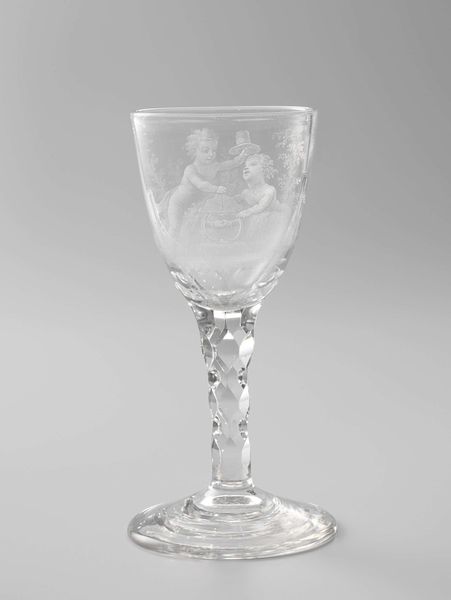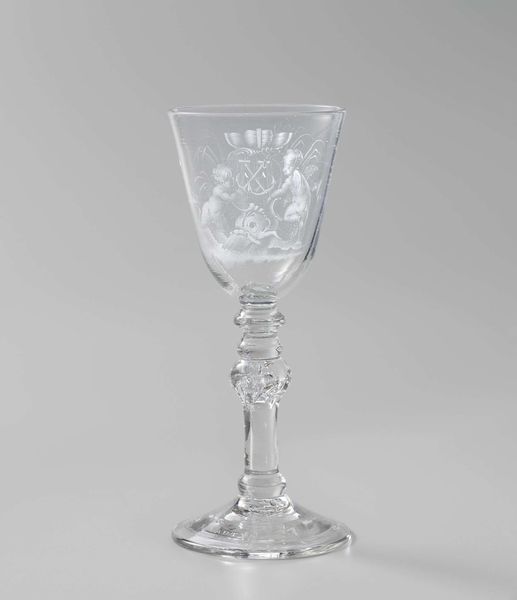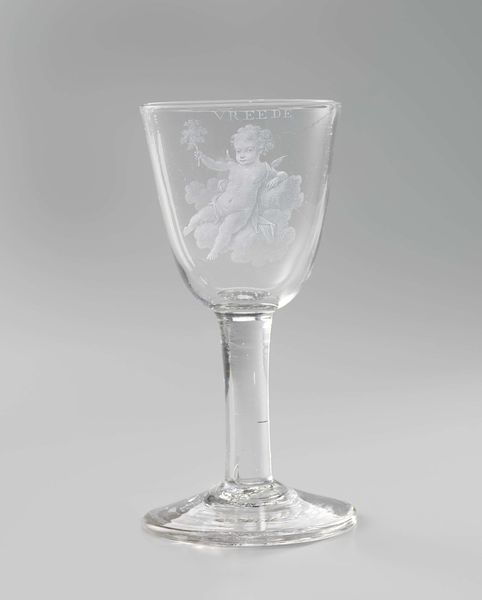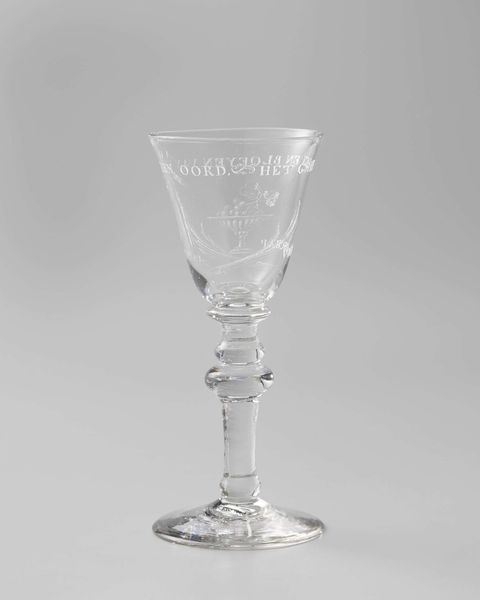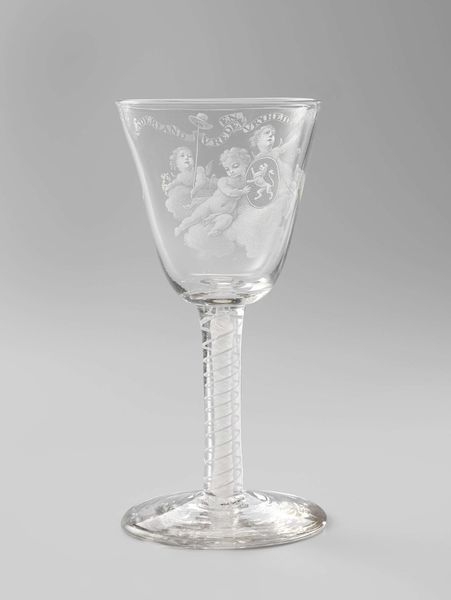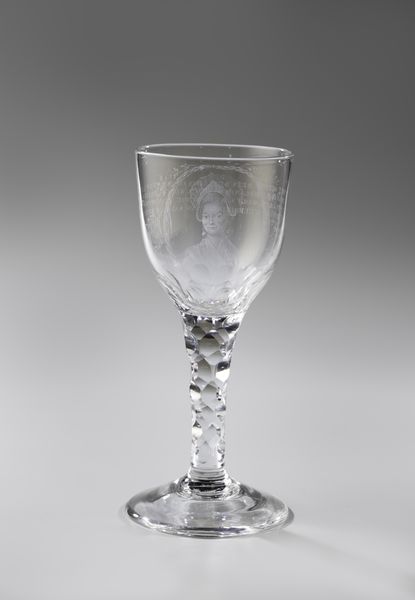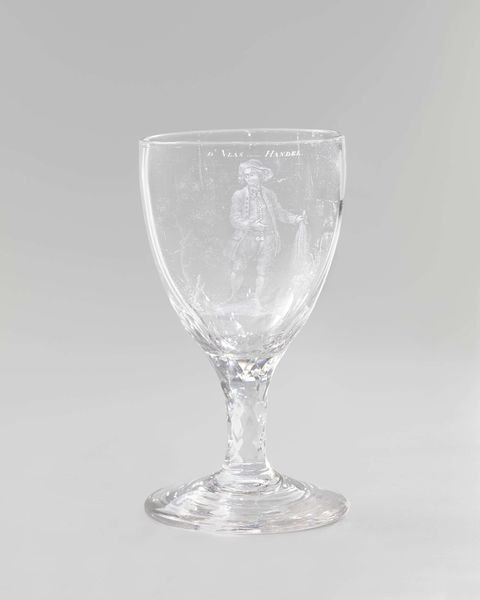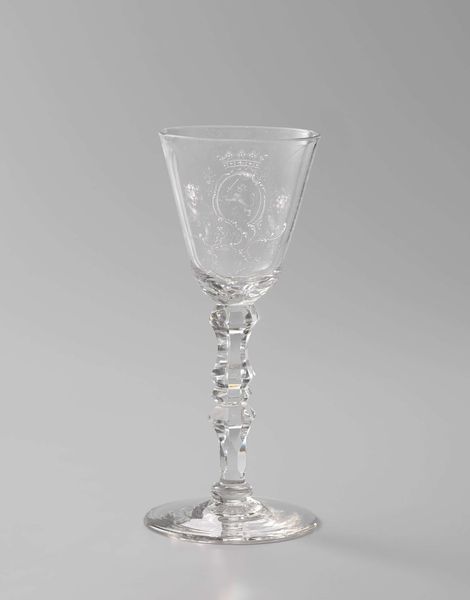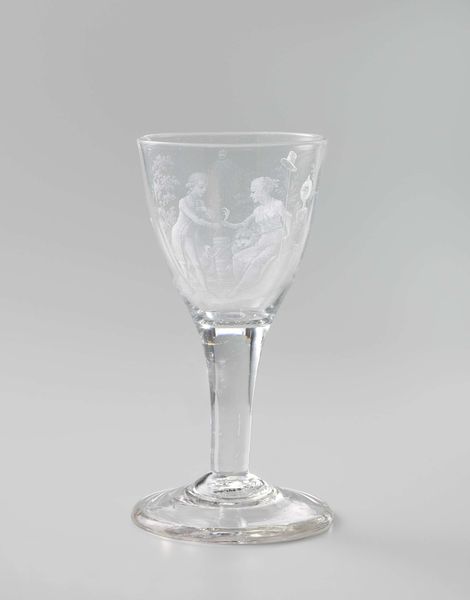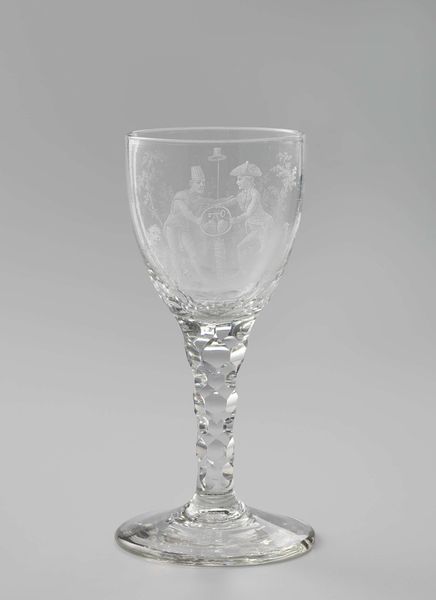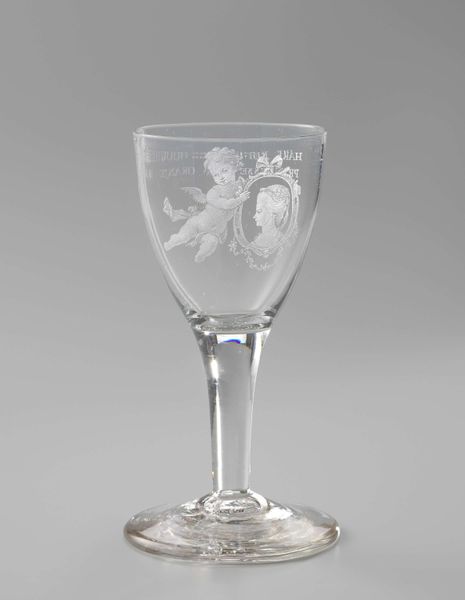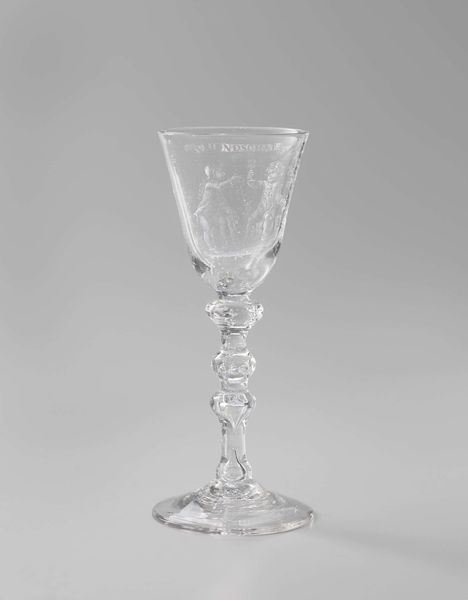
glass, engraving
#
portrait
#
neoclacissism
#
glass
#
ceramic
#
genre-painting
#
engraving
Dimensions: height 15.1 cm, diameter 7.5 cm, diameter 7.5 cm
Copyright: Rijks Museum: Open Domain
Curator: This delicate wine glass, created anonymously around 1794, showcases an engraving depicting children making a bust of William V. Editor: It’s charming, in a strangely formal way. The scene is so detailed for something etched on glass. The material seems at odds with the apparent significance of the image. Curator: The glass itself speaks volumes about its historical moment. The late 18th century witnessed a surge in detailed genre scenes, reflecting an evolving role of childhood within both the private and political spheres. It also nods towards neoclassicism, the idealized forms in the small vignette mirror the era's aesthetic leanings, it was important to show loyalty toward leadership with such works. Editor: Indeed. Look closely and you’ll see symbols relating to idealized leaders of that time, reflecting virtue and governance etched in this glass; the children fashioning the bust embody innocence and perhaps a hope for continued leadership. There's this sense of cultural continuity and an almost... devotional aspect to portraying the figure being molded. I wonder, what did a simple cup such as this offer, in ways that a painting couldn't? Curator: Well, consider the nature of glass: it is transparent, fragile, and precious. Owning this engraved wine glass probably conferred status, but moreover drinking from such a glass transforms a mundane activity into a civic ritual. With images on common tableware, you domesticize—and thereby normalize—political iconography, bringing ideals of citizenship into the home. Its function then provides constant reminders for how to properly behave. Editor: Fascinating how it fuses artistry and functionality! Even now, looking at the delicate line work, you get the sense of history infused with a tangible connection to past aspirations. Curator: Ultimately, pieces like this glass become vital artifacts. They provide tangible evidence of how sociopolitical messages become interwoven into everyday lives during turbulent moments of statecraft, even down to your evening toast. Editor: Yes, it is true. Visual storytelling, even on a glass, reflects aspirations, anxieties, and the persistent desire to create symbols for those beliefs and worries to pour them into.
Comments
No comments
Be the first to comment and join the conversation on the ultimate creative platform.
